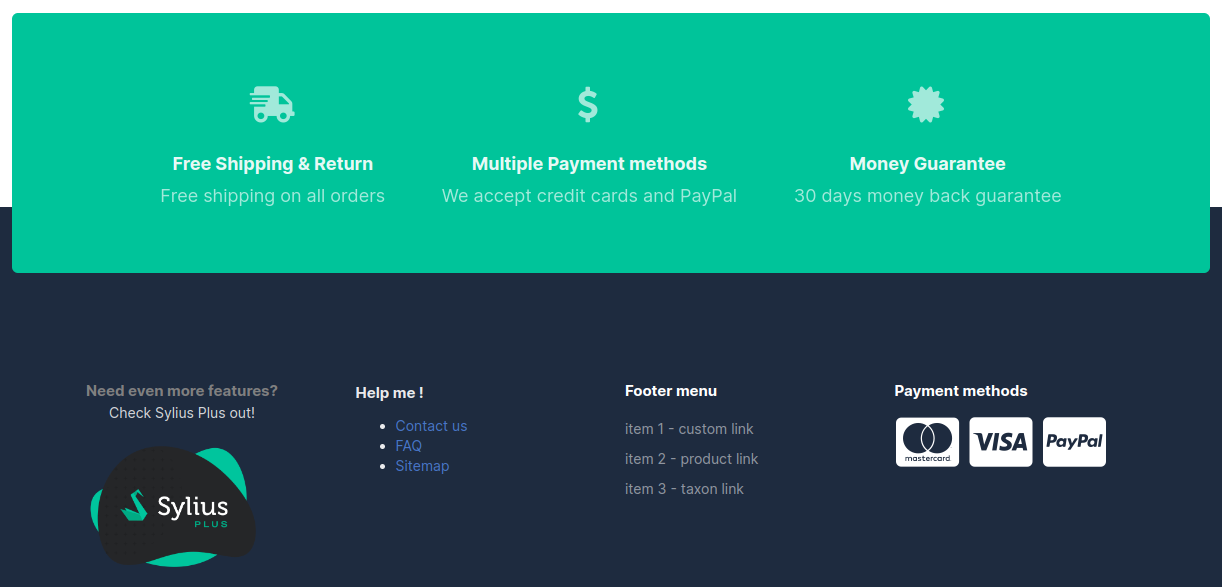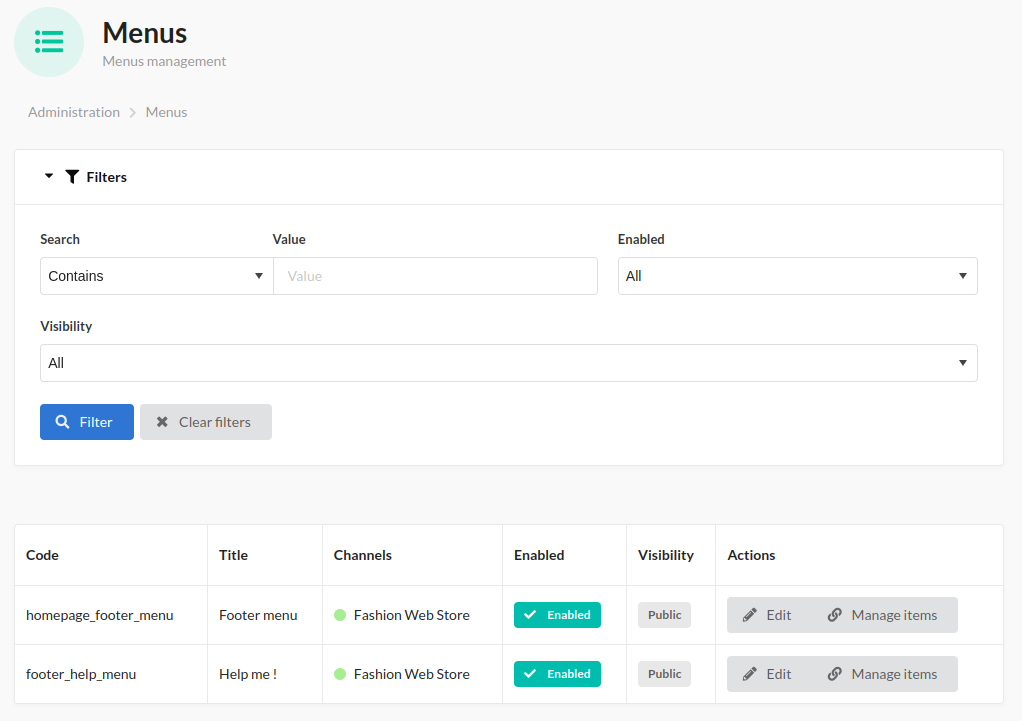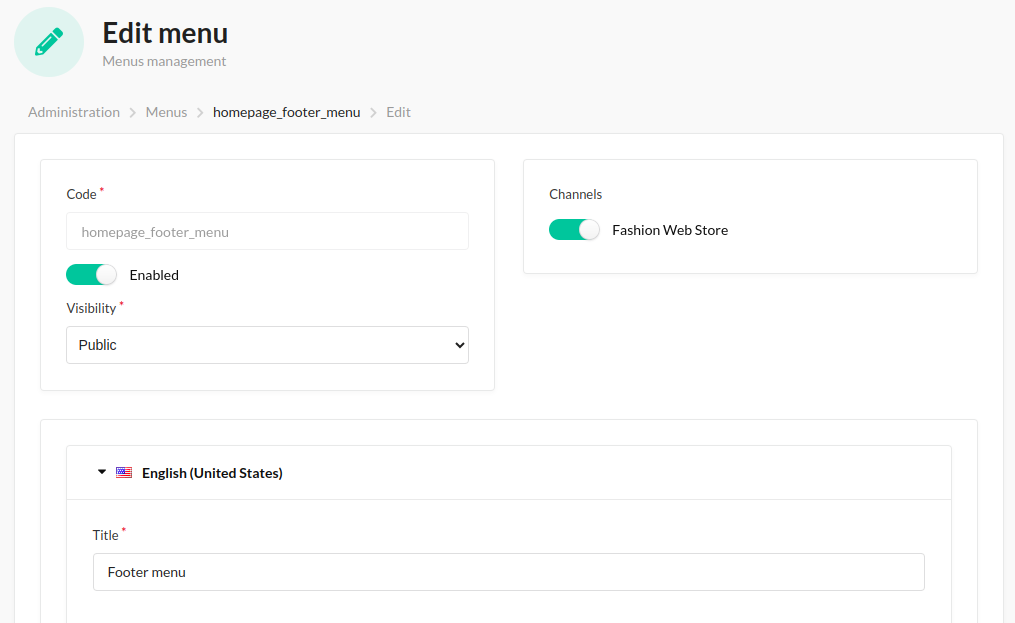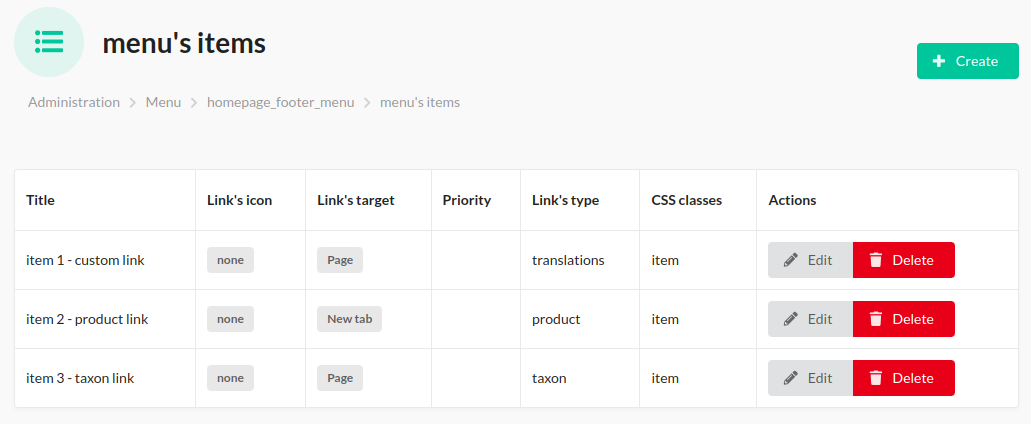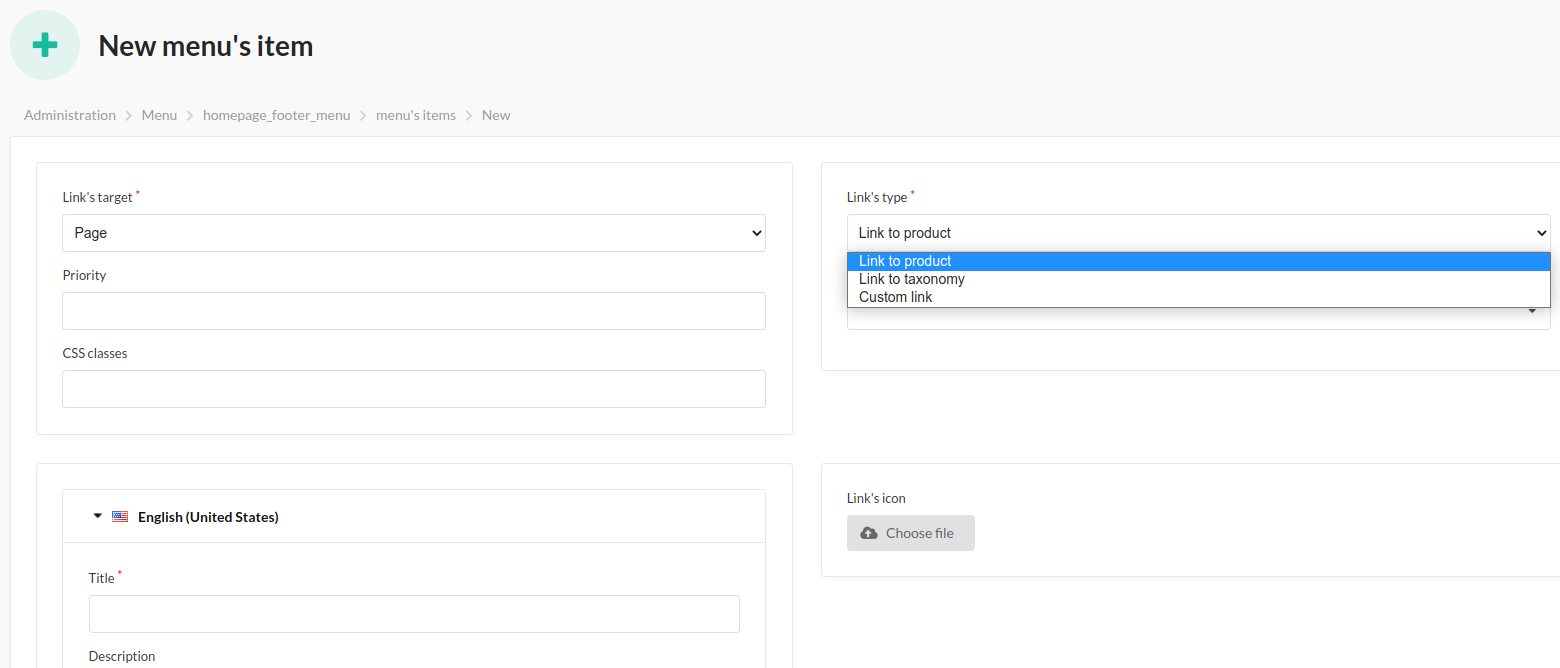wemea / sylius-menu-plugin
Plugin allowing to manage Store menus from the Back Office in Sylius
Installs: 2 147
Dependents: 0
Suggesters: 0
Security: 0
Stars: 5
Watchers: 1
Forks: 0
Open Issues: 4
Type:sylius-plugin
pkg:composer/wemea/sylius-menu-plugin
Requires
- php: ^8.1
- cweagans/composer-patches: ^1.7
- sylius/mailer-bundle: ^1.8 || ^2.0@beta
- sylius/sylius: ^1.13
- symfony/webpack-encore-bundle: ^1.15
Requires (Dev)
- behat/behat: ^3.6.1
- behat/mink-selenium2-driver: ^1.4
- dmore/behat-chrome-extension: ^1.3
- dmore/chrome-mink-driver: ^2.7
- ergebnis/composer-normalize: ^2.31
- friends-of-behat/mink: ^1.8
- friends-of-behat/mink-browserkit-driver: ^1.4
- friends-of-behat/mink-debug-extension: ^2.0.0
- friends-of-behat/mink-extension: ^2.4
- friends-of-behat/page-object-extension: ^0.3
- friends-of-behat/suite-settings-extension: ^1.0
- friends-of-behat/symfony-extension: ^2.1
- friends-of-behat/variadic-extension: ^1.3
- friendsofphp/php-cs-fixer: ^3.38
- friendsoftwig/twigcs: >=4
- matthiasnoback/symfony-config-test: ^4.3
- php-parallel-lint/php-parallel-lint: ^1.3
- phpro/grumphp: ^1.16
- phpspec/phpspec: ^7.2
- phpstan/extension-installer: ^1.0
- phpstan/phpstan: ^1.8.1
- phpstan/phpstan-doctrine: 1.3.53
- phpstan/phpstan-strict-rules: ^1.3.0
- phpstan/phpstan-webmozart-assert: ^1.2.0
- phpunit/phpunit: ^9.5
- polishsymfonycommunity/symfony-mocker-container: ^1.0
- sylius-labs/coding-standard: ^4.2
- symfony/browser-kit: ^6.0
- symfony/debug-bundle: ^6.0
- symfony/dotenv: ^6.0
- symfony/flex: ^2.2.2
- symfony/intl: ^6.0
- symfony/web-profiler-bundle: ^6.0
- vimeo/psalm: ^5.16
Conflicts
- symfony/framework-bundle: 6.2.8
This package is auto-updated.
Last update: 2025-12-31 00:24:13 UTC
README
Sylius Menu Plugin
Plugin allow to manage Shop menus from the Back Office
Features:
- Create/Delete menu with commands :
wemea:menu:create <code>wemea:menu:delete <code>
- Manage visibility of menus
- Manage menu item (link, title, description, order/priority, icon)
- Default link types :
- Custom: put any link inside
- Product: choose link to a product and path is generated dynamically
- Taxon: choose link to a taxononmy and path is generated dynamically
Summary
Installation
-
Require plugin with composer:
composer require wemea/sylius-menu-plugin
-
Add followings to your
config/bundles.phpif not already automatically added:Wemea\SyliusMenuPlugin\WemeaSyliusMenuPlugin::class => ['all' => true],
-
Import config in your
config/packages/_sylius.yaml:imports: [...] - { resource: "@WemeaSyliusMenuPlugin/Resources/config/app/config.yml" }
-
Import routes in your
config/routes.yml:wemea_menu_routing: resource: "@WemeaSyliusMenuPlugin/Resources/config/routing.yml"
-
Add menus into your template. Check Usage - Add a menu for more information
-
Run integration test.
⚠️ There are integration tests only for admin part. You should add your owned tests for shop part.
Usage
Add a menu
Tips :
Menus can only be created and removed with Symfony command to avoid shop admin removed accidentally a menu and block the UI. Menus can be disabled on the BO.
-
Create new menu
Run
bin/console wemea:menu:create <your_menu_code>You can run
bin/console wemea:menu:create --helpto view available options -
Add this menu in your template: add this where you want to introduce menu to your page(s)
{{ render(controller('wemea_sylius_menu.controller.render_menu::renderAction', { 'code': '<your_menu_code>' })) }}By default, the menu use
@WemeaSyliusMenuPlugin/Shop/Menu/_default.html.twig. If you want to use your own template, add tempalte option on render :{{ render(controller('wemea_sylius_menu.controller.render_menu::renderAction', { 'code': '<your_menu_code>', 'template': '@App/your/menu/template.html.twig' })) }} -
Add behat test to check menu integration
You can view full integration on this file and test on this folder
Change default resource route mapping
If you change defaults routes of application, you need to change route mapping of link resources. You can do it on config/packages/wemea_sylius_menu.yml with this configuration :
## Default configuration wemea_sylius_menu: resource_path_resolver_configuration: custom: # route is null for custom type because is not use the router resolver route: null parameters: [] product: route: 'sylius_shop_product_show' parameters: slug: 'getSlug' taxon: route: 'sylius_shop_product_index' parameters: slug: 'getSlug'
Parameters node is an associative array between route parameter and the method name to access at the resource property
Add new link type to another resource
This plugin allows creating new resource link. You may need it to redirect on custom resource (like brand, we use this example for instruction example)
-
Override the default MenuLink entity:
<?php declare(strict_types=1); namespace App\Entity; use Doctrine\ORM\Mapping as ORM; use Wemea\SyliusMenuPlugin\Entity\MenuLink as BaseMenuLink; /** * @ORM\Entity * @ORM\Table(name="wemea_menu_link") */ class MenuLink extends BaseMenuLink { //Add your new property /** * @var Brand|null $brand * @ORM\ManyToOne(targetEntity="Brand") * @ORM\JoinColumn(name="brand_id", referencedColumnName="id") */ protected $brand; //add this property name to know properties public static function getLinkProperties() : array{ return array_merge( parent::getLinkProperties(), ['brand'] // your property name ); } }
-
Declare this entity as resource model into
config/packages/_sylius.ymlsylius_resource: resources: wemea_sylius_menu.menu_link: classes: model: App\Entity\MenuLink
-
Add form extension for
Wemea\SyliusMenuPlugin\Form\Type\MenuLinkTypewith (autocomplete ?) choice type. Check official documentation create form extension.This field should NOT be mapped
$builder ->add('brand', BrandAutocompleteChoiceType::class, [ 'mapped' => false, ]);
This new field is automatically add to template. By default, it uses :
{{ form_row(form.brand) }}.If you want use a custom template, you can create
templates/bundles/WemeaSyliusMenuPlugin/Admin/MenuLink/Form/Fields/_<field_name>.html.twigand use field with the propertyform. -
Add routing configuration on
config/packages/wemea_sylius_menu.ymlwemea_sylius_menu: resource_path_resolver_configuration: # Use property name as key brand: route: 'app_shop_brand_show' parameters: [ 'code' => 'getCode' ]
-
Clear cache and make migration to update schema
Use menu fixtures
If you need to load menu programmatically, you can use menu fixture like it :
sylius_fixtures: suites: <suite_name>: fixtures: menu: name: menu options: custom: - code: <menu_code> visibility: public # use private or public value (is public by default) enabled: true # menu is enabled by default #Transltion accept associative array of [locale => [title => <expected title> ]] translations: en_US: title: The title #channels is array of channels code channels: ['FASHION_WEB'] #Define items of menu items: - target: _self # target accept _self or _blank. By default is _self #Transaltions is defined like menu translation with 'description' optional node translations: en_US: title: <title> description: <description> # link node allow to defined the target resource of menu item link: # for a custom link, use associative array of locale => path custom_link: en_US: /the/expected/path # for a product link use the code of target product product_code: <product_code> # for a taxon link use the code of target product taxon_code: <taxon_code>
To see a full implementation example, you can check the file footer_help_menu.yaml.
Issues / Remaining work
- Add fixtures for Menu item images
- Add possibility to add an anchor as custom link
- Manage resolve path according current locale for custom links in the case where store use localized URL


